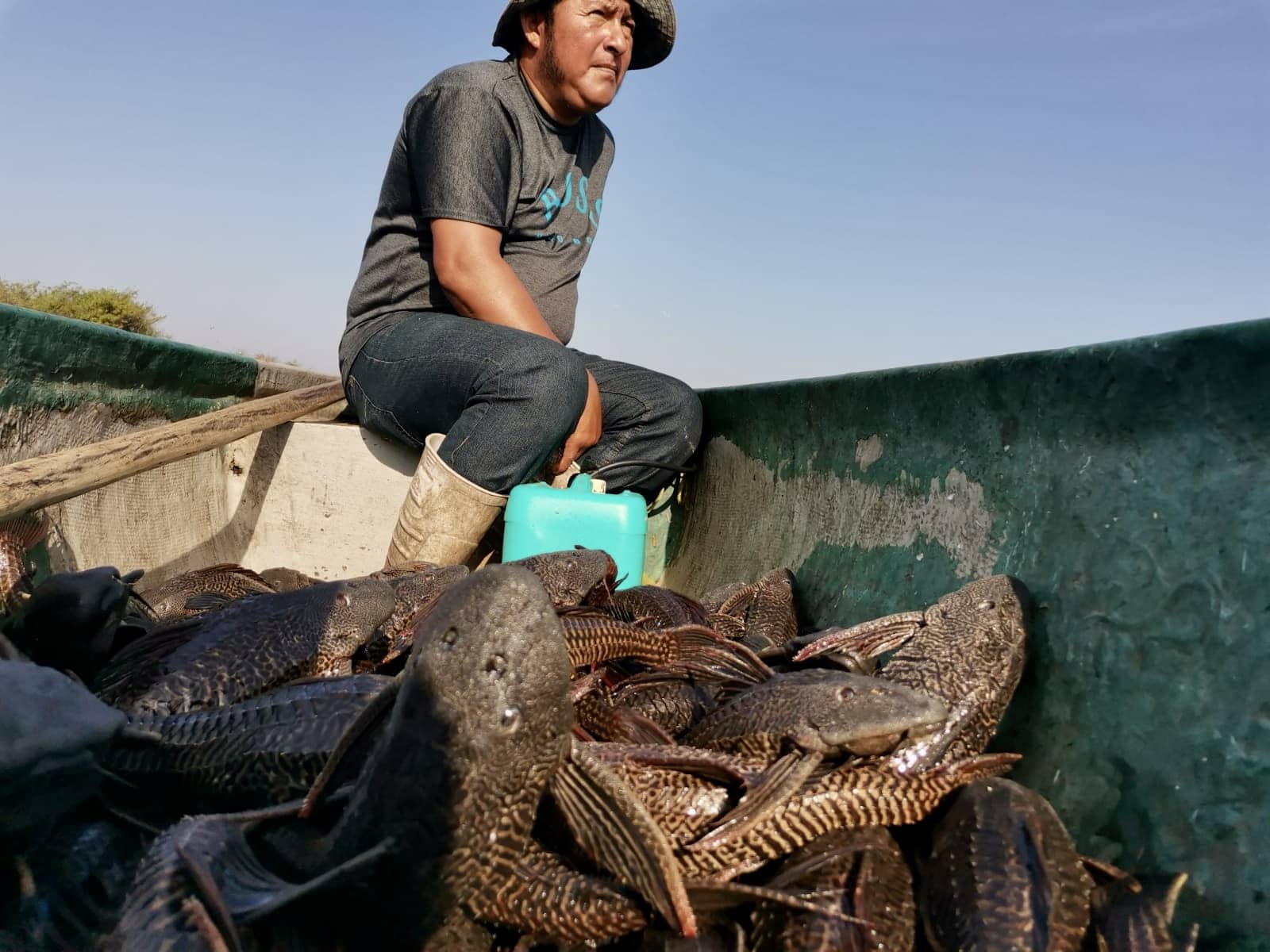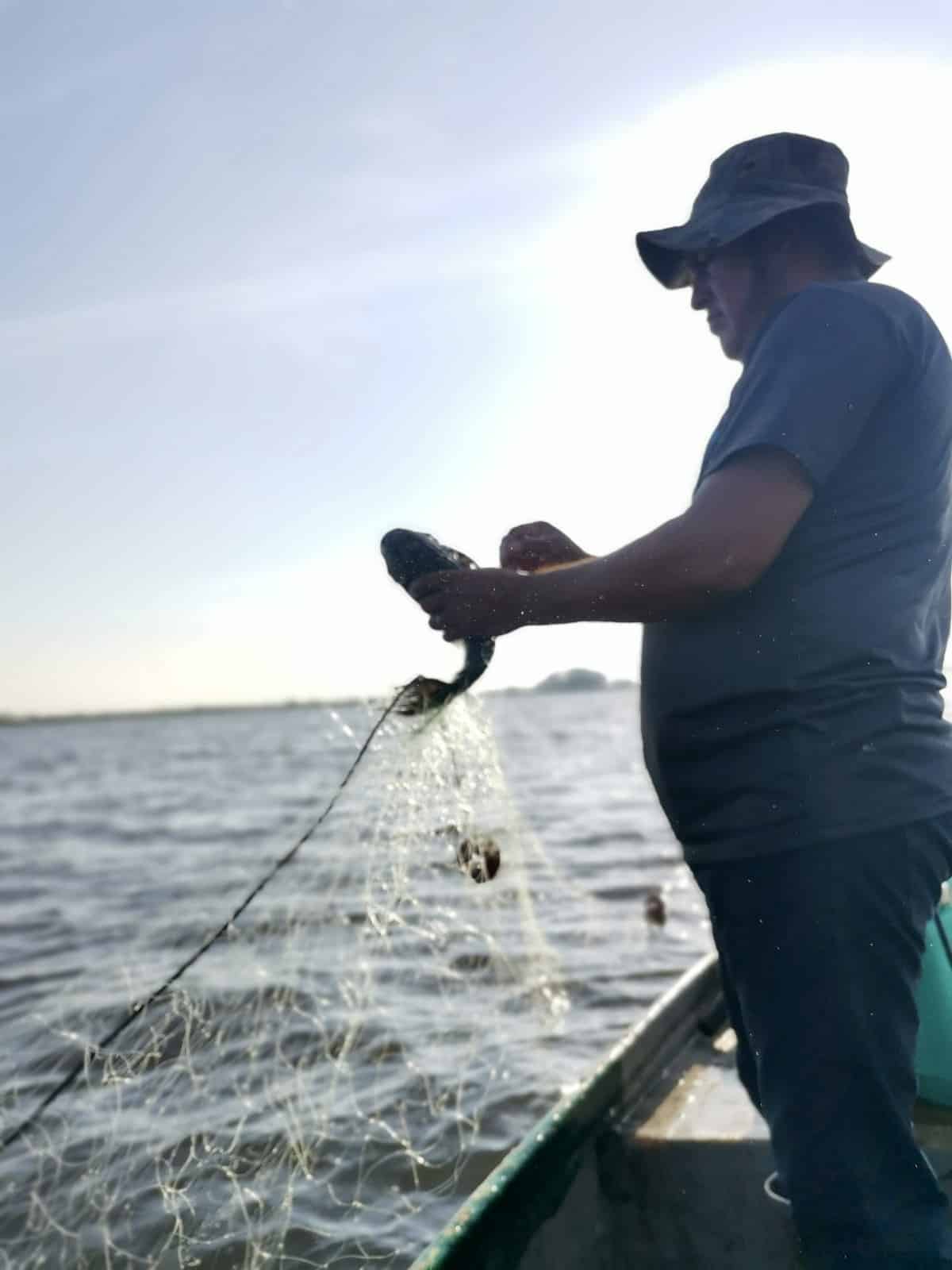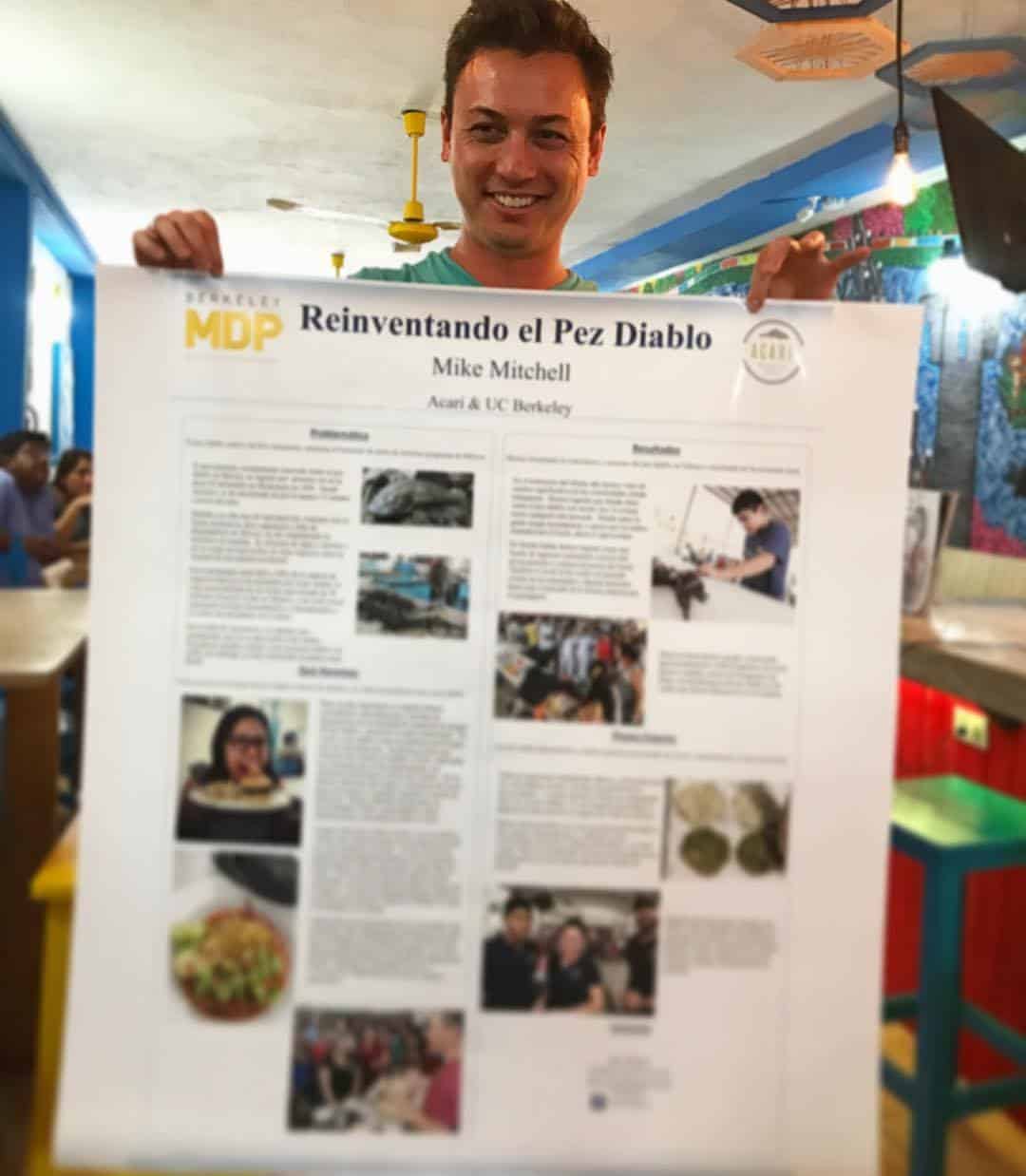An alien species is whisked away to a new environment, gradually taking up the entire area and its resources and leaving native species with next to nothing. The alien species continue to thrive while the native ones start to die. In other words, a foreign invasion where the possibility for the invaders to win is high; something happening today. Fortunately, there is a way to combat – or even better – benefit, from these invasive species. Pezzy Pets, a company that turns invasive fish species into pet treats, does just this. In an exclusive interview with Earth.Org, Mike Mitchell, the co-founder of Pezzy Pets, discusses the importance of tackling invasive species and how the company upcycles invasive fish through a sustainable production process.
—
As a straightforward explanation, invasive species are species that have relocated due to climate change or have been transported, either accidentally or purposely by humans, outside their native range to a completely different area. These species eventually harm native biodiversity, ecosystems, and habitats in that new area, to the point where the extinction of a native organism, plant, or animal can occur.
Along with ecological harm, invasive species can have negative economic repercussions, like obstructing necessary infrastructure. The zebra mussel, which is native to southeastern Europe but invasive to Canada and the United States, is an example as it can block off pipes. Invasive species also threaten human health. The Asian tiger mosquito—native to Southeast Asia but is now found in North America—for example, carries vast, human-susceptible diseases with it.
In particular, aquatic invasive species like certain fish such as the armoured catfish, the lionfish, and the silver carp pose a significant threat to aquatic indigenous species by outcompeting and rendering habitats unliveable for the indigenous ones. This propels a rapid population increase for these invasive fish species, especially since many of them do not have natural predators in their new conditions.
These innocent, aquatic native organisms are inevitably left battling a losing fight; a fight that they did not even begin but, instead, was started by others. Despite the above-stated seeming rather bleak, optimism paves its way to the forefront as there are solutions to help these indigenous species keep their homes and, most importantly, preserve their survival from the invaders.
And it merely takes “one bite at a time” (literally) to help restore the environment from invasive species, specifically invasive fish species, as Mike Mitchell, co-founder of Pezzy Pets, highlights in an interview with Earth.Org.
The Threats of Invasive Fish Species
With a background in the seafood industry, Mitchell was working with fishermen when he was faced with the threats that invasive fish species pose.
“I used to live in Mexico and I was working with small-scale fishermen. That’s when I came across a couple invasive species of fish that were causing a lot of environmental and economic issues,” Mitchell explained. The issues he witnessed prompted him to take action on three highly-invasive and destructive species: The armoured catfish, the lionfish, and the silver carp.
Front-line invaders, the armoured catfish is a renowned invasive species that does not shy away from wreaking havoc on local, established aquatic ecosystems. Protected by a coat of bony plates, resilient in producing offspring, and able to survive well past 20 hours out of the water due to their large vascularized, or vessel-filled, stomach, these fish can withstand and adapt to various environmental conditions.
Initially native to the tropical areas of the Amazon, years of accidental and intentional releasing of the armoured catfish has allowed the species to spread to numerous Mexican and American states, where it poses a substantial danger to indigenous ecosystems.
Instances of such dangers include burrowing into shorelines so that the fish can breed, subsequently creating erosion and altering local conditions which may increase the risk of harmful algae blooms. While the armoured catfish eats algae from an array of surfaces to sustain itself, the species have been witnessed invading the spaces of manatees in Florida, US, by disturbing and eating algae off the backs of these Floridan natives, potentially leading to behavioural changes of the innocent animals.
Mexicans have even given the armoured catfish another name, pez diablo, in other words, the Mexican devil fish, because of the significant economic threat it poses from disrupting fisheries and hindering fishermen from fishing for income to devastating existing properties in aquatic locations.

A fisherman returns with captured armoured catfish (also known as the Mexican devil fish or pez diablo). Photo: Sara Escobar, Tortugas al Viento.
Aside from the armoured catfish, two other invasive species, the lionfish and the silver carp, equally pose massive hazards when found in new environments.
Known for its showstopping appearance in aquariums and the wild, the lionfish is not so impressive after realising just how detrimental this species can be. Despite their native home being in the Indo-Pacific region, years of speculated, societal dumping has allowed these fish to travel and flourish in the Atlantic regions, particularly US waters, the Caribbean, and Mexico.
Combined with their nonselective, greedy eating habits and their lack of natural predators, the lionfish can negatively influence the lives of other organisms. For example, a lionfish will eat anything in its line of sight from crustaceans to invertebrates to fish, eventually generating a population reduction of important organisms and dismantling the stability of indigenous ecosystems. From a commercial viewpoint, the lionfish can greatly affect fisheries as this invasive species preys on various commercial fish like the snapper and the grouper.
Though not as physically striking as the lionfish or armed like the armoured catfish, the silver carp causes just as much damage outside its native range. After a series of imports by the hands of society for the purpose of controlling phytoplankton and algae in aquatic facilities in the last century, the silver carp, once native to Eastern Asia, has taken over the US rivers and lakes, and swiftly made its way north to the Great Lakes in Canada.
With a silver carp able to grow approximately 100 pounds (45kg), this fish carries a massive load of athleticism and an insatiable appetite for plankton, enabling them to jump over barriers and dams and consume 40% of their body weight in a day, respectively.
To put things into perspective, a 100-pound silver carp can eat as much as 40 pounds (18kg) of plankton per day. Large consumption of plankton means less food for native mussels and fish such as the gizzard shad, resulting in the invasive silver carp outcompeting local biodiversity. Paired with the silver carp’s ability to reproduce rapidly, laying hundreds of thousands of eggs each time, this invasive fish can promptly overpopulate a new environment, leaving native species with no chance of fighting back.
Because of all the ecological and economic problems that the armoured catfish, the lionfish, and the silver carp present, Mitchell decided to take action, partnering up with a chef friend. He began conducting workshops on invasive fish species and talking to fishing communities, while his friend used these fish in cooking demonstrations.

Co-founder and CEO of Pezzy Pets, Mike Mitchell conducts workshops using the armoured catfish in Tabasco, Mexico.
The workshops and demonstrations broadened into selling fillets of these invasive fish at restaurants in collaboration with fishermen. After some time, Mitchell branched out from restaurant sales to create an even bigger impact.
“I saw an opportunity to really scale our impact […]. We can create a lot of great environmental and social impact in the communities that we work in,” he said.
These were the humble beginnings that ultimately led to the birth of Mitchell’s company, Pezzy Pets.
Pezzy Pets Takes on a Unique Spin With Invasives
Pezzy Pets combines several eco-friendly criteria to make the company truly eco-friendly by upcycling invasive fish, utilising sustainable packaging and directing its sales to the pet industry—an industry that has its own negative impacts on the environment.
The term “upcycling” refers to reusing materials in a way to increase their value, exactly what Mitchell’s company does with the troublesome armoured catfish, lionfish, and silver carp. Pezzy Pets transforms these invasive fish species into healthy consumption for pets, dogs and cats alike, in the form of “single and limited ingredient” treats, as described on the company’s website.
Deciding on what specific species to use comes with a myriad of factors. Mitchell explained that “every fish or invasive species, in general, has its own unique set of challenges.” Not only does the fish have to be invasive, but it also has to be appetising and appealing from a supply and chain standpoint.
Although not as widely consumed, the armoured catfish hits all the factors Mitchell was looking for, with the species being found in large volumes and able to breathe atmospheric oxygen; therefore, it does not immediately require to be put on ice as the fish remains well alive after capture.
“It makes it very attractive to […] produce at industrial scale.”
When it pertains to dealing with live fish and successfully upcycling it to pet treats, Mitchell had to consider the “infrastructure limitations” faced during the company’s manufacturing process in Mexico.
Working with roughly 100 fishermen from different supply chains and teaming with partners allowed Pezzy Pets to avoid the “complicating” factors of economics, supply chain infrastructure, and additional costs of certain materials such as ice.

A fisherman is in the process of capturing an armoured catfish using nets in Tabasco, Mexico. Photo: Sara Escobar, Tortugas al Viento.
Following the armoured catfish, Pezzy Pets widened their product selection to the silver carp and the lionfish.
“We decided to branch into the lionfish, and then silver carp again for slightly different reasons, but it was just the stars kind of aligned in terms of the processing infrastructure and supply chain, also the volumes that we can do.”
As for the silver carp, this species of fish does not have the ability to survive out of the water for an extended period of time; however, the company’s partnership that works with fishermen is able to catch the carp in nets and process the fish in their facility.
The lionfish, on the other hand, is “pretty unique”—as Mitchell put it—because of the venomous spines found on the grooves of its spine, necessitating these fish to be individually caught through scuba diving and spearfishing in Southern Mexico. Even though the lionfish does have venomous spines, the species is still safe to eat and handle when done so properly as the fleshy, edible portion itself is free from toxins.
These invasive fish are then upcycled. They are filleted, broken down, and hydrated into thin strips in the company’s FDA-regulated facilities, and sent to San Francisco, US, to finalise and package the products in 100% compostable packaging. When all is done and ready, the final products, the pet treats, are sold in stores for dogs and cats to snack on.
Caring About Invasive Species Is Just as Important
What started as workshops and demonstrations steadily turned into a green company producing treats for companion animals—a company that Mitchell was “very adamant” about having “a very strong social and environmental impact.”
The co-founder’s adamancy and all of the hard work have paid off for both the company – which earned itself a Certified B Corporation label – and the environment.
Today, the works of Pezzy Pets have removed around 100 tonnes of armoured catfish in Southern Mexico. An estimated 882 to 1,763 pounds (400 to 500 kg) of lionfish have been removed as well, yielding a positive impact on the environment and assisting with mitigating the invasive species problem.
“I think that’s the biggest thing is we’ve seen some native species able to rebound after removing so much [of the devil fish],” Mitchell said.

Mitchell holds a poster about the armoured catfish (pez diablo) for a presentation at a sustainability conference in Mexico.
With invasive species increasing worldwide, it is critical to address the problem and implement solutions to put an end to destructive, invasive biological spreading; otherwise, native biodiversity will perish.
And while the problem with invasive species does not seem to be on the frontline of environmental issues, especially when the present world is already dealing with more pressing matters like climate change and pollution, invasive species accelerate the existing damage on the planet.
“I think, oftentimes, the case of invasive species is connected to a lot of the […] environmental problems that we face,” Mitchell explains, adding that problems such as climate change and pollution fuel the spread of invasive organisms. “[…] Climate change is often a main driver of invasives or pollution.”
The combination of climate change and invasive species creates ample opportunities for indigenous ecosystems and organisms to be affected negatively. For instance, climate change causes ice to melt, bringing on easier routes and better access for invasive species to spread.
On top of climate change, pollution favours invasive species over native ones. A study shows that high levels of aquatic pollution (in this case, the pollution was copper) led to a decline of more than 40% of indigenous species. On the contrary, invasive species populations were unaffected.
Now, there is no denying that invasive species do one thing and one thing only: They invade and destroy. This makes it paramount to take action and preserve native biodiversity, whether it is by taking action as a business like Pezzy Pets or simply as a consumer.
Whilst it may seem hard to make any positive impact with substantial problems like climate change, consumers, Mitchell believes, can take a “very tangible direct impact” on the invasive species problem.
“Not necessarily that one is more important [than] the other but […] as compared to something like climate change, which is a lot broader scale, sometimes it’s hard to feel or see your impact,” Mitchell said. “With invasive species, you can eat it right and make an impact. So we like to say you’re helping restore the environment, one bite at a time because every bite, every treat, give[s] a tangible impact.”
In the end, caring about invasive species is just as important as caring about any other environmental problems. Companies like Pezzy Pets demonstrate this. The company is open to expanding its selection of invasive species to upcycle and produce more eco-friendly products for companion animals.
On an individual level, tackling the invasive species problem really starts with consumers and their choices like choosing to give your dog or cat a treat made from an armoured catfish, a lionfish or a silver carp.
“[Consumers] can have a real direct impact with their choices,” Mitchell concluded. “And not just with invasive species but with all their consumer choices.”
You might also like: Are Humans an Invasive Species?














